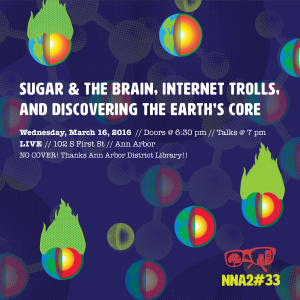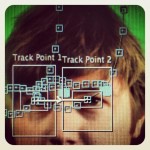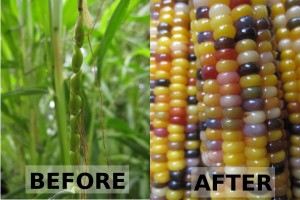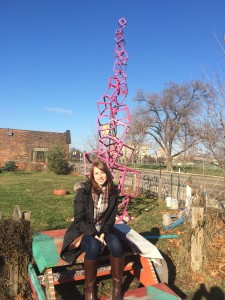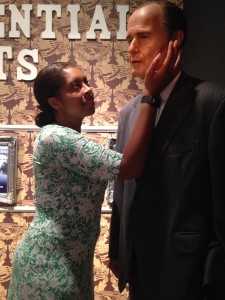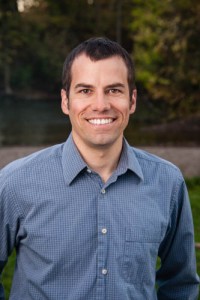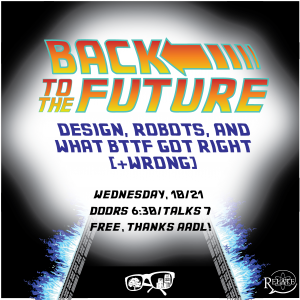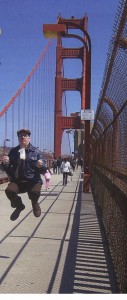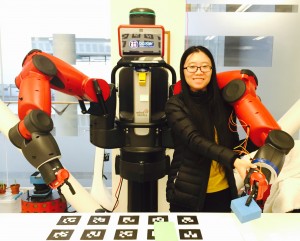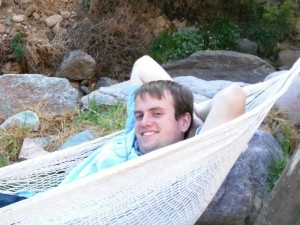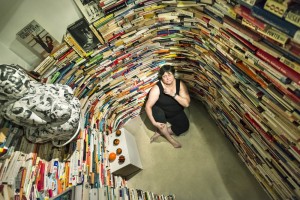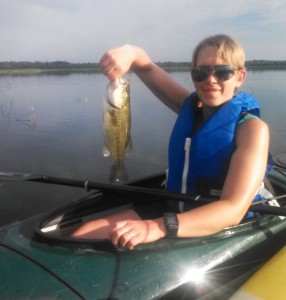Bacteria Vs. Viruses, Backyard Brains, & Beer Science
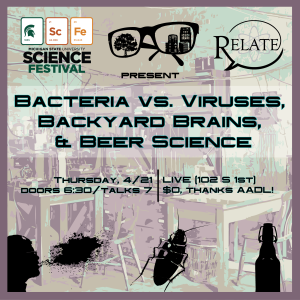 Drink an enlightening brew while you discover bacteria battles and cockroach control at this month’s Nerd Nite Ann Arbor! Come by to hear Ada Hagan tell of the zombie apocalypse that occurs when a certain virus attacks bacteria. Dylan Miller will explain how to take over someone’s free will with DIY neuroscience. And Ryan Engemann will explain scientific development through beer while you order another pint. We are excited to be partnering with the Michigan State University Science Festival this month, so come check out the awesome speakers we’ve got lined up to school you this time.
Drink an enlightening brew while you discover bacteria battles and cockroach control at this month’s Nerd Nite Ann Arbor! Come by to hear Ada Hagan tell of the zombie apocalypse that occurs when a certain virus attacks bacteria. Dylan Miller will explain how to take over someone’s free will with DIY neuroscience. And Ryan Engemann will explain scientific development through beer while you order another pint. We are excited to be partnering with the Michigan State University Science Festival this month, so come check out the awesome speakers we’ve got lined up to school you this time.
When: Thursday, April 21, 2016, doors at 6:30 pm, talks at 7 pm!
Where: LIVE, 102 S First St, Ann Arbor
$$$: NO COVER! cuz Ann Arbor District Library said so
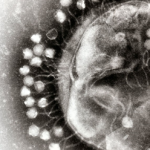 Ada Hagan – Predator vs. Prey: A Micro Tail
Ada Hagan – Predator vs. Prey: A Micro Tail
Bacteria are feared by humans for their ability to cause diseases that can’t always be treated with antibiotics. But do bacteria have a predator of their own? Come learn about the virus that uses its “tail” to prey on bacteria, turning them into zombies. Predator versus prey may be a familiar story, but hear it with some new “micro” characters.
About Ada: Ada Hagan is a doctoral student at the University of Michigan in the department of Microbiology and Immunology. She does recon on the sneaky ways bacteria find nutrients (like iron!) when they are invading our bodies. Ada is a co-founder of the graduate student science communication blog MiSciWriters. Originally hailing from the mountains of East Tennessee, Ada spends her spare time writing, walking her dogs, cooking, and comparing strollers. Follow her on Twitter @adahagan.
 Dylan Miller – The Body’s Electricity: From Cockroaches to You!
Dylan Miller – The Body’s Electricity: From Cockroaches to You!
Have you ever had the desire to lose your free will? Or, alternatively, have you ever had the desire to take someone’s free will? This talk will discuss how Backyard Brains uses DIY-style neuroscience to bring to you direct control, via your muscle electricity, over cockroaches, machines, and even other humans!
About Dylan: Dylan Miller came to Backyard Brains as an undergraduate in neuroscience. He has since graduated from Michigan State University, and now works at BYB as a research scientist and on marketing. He initially joined in order to apply the RoboRoach setup to controlling scorpions, and moved on to manage several other undergraduate DIY-neuroscience projects. He also studies the behavior of scorpions in a separate research lab at MSU. Follow him on Twitter @BraconidaeBaron.
 Ryan Engemann – The Science of Beer
Ryan Engemann – The Science of Beer
Beer has been there from the beginning of the scientific revolution. From providing sanitary nourishment to the development of modern medicine and pasteurization, beer has been an integral influence on the development of science. Join Certified Cicerone® Ryan Engemann and explore this fascinating topic–over a pint, of course.
About Ryan: A nerd by nature, Ryan started working in the craft beer industry in Northern Michigan in 2011. He became the first Certified Cicerone in Northern Michigan and now can be found selling beers and talking science at Brewery Vivant in Grand Rapids. Check out what the brewery is up to on Facebook, Instagram or Twitter @breweryvivant.
Sugar & the Brain, Internet Trolls, & Discovering the Earth’s Core
We’ve got a special WEDNESDAY edition of NNA2 headed your way this March! Monica Dus will reveal the secret of why that sugar-free cookie just ain’t the same as the real thing. Lindsay Blackwell will explain the difference between harmless and super-scary trolls on the interwebs. And Brian Worthman will take us on a journey by describing how smarty-pants scientists figured out the makeup of the Earth’s crust. Three of the greatest nerds that A2 has to offer, awesome friends, and booze to boot? Get down to LIVE to geek out with us!
When: WEDNESDAY, March 16, 2016, doors at 6:30 pm, talks at 7 pm!
Where: LIVE, 102 S First St, Ann Arbor
$$$: NO COVER! bc Ann Arbor District Library RULEZ the SCHOOLZ!!
Monica Dus: “50 Shades of Sweet: How Sugar Dominates the Brain”
We like to think we can resist life’s temptations, but ever tried saying no to a cookie? It whispers to you, it calls to you. Sugar is a powerful force: it hijacks your brain and wins nearly all the time … I’ll talk about how this happens and also how, even if your mouth is fooled by fake sugar, your brain is not.
It whispers to you, it calls to you. Sugar is a powerful force: it hijacks your brain and wins nearly all the time … I’ll talk about how this happens and also how, even if your mouth is fooled by fake sugar, your brain is not.
About Monica: I got my first microscope at age 7 and had an idyllic childhood in Italy pulling hair off Barbies and legs off bugs and looking at them under the microscope. What really drew me to science, however, was the pervasive beauty of the natural world. I still remember my first encounters with molecular biology: I was awed by its beauty and complexity. Nearly twenty years later, I still haven’t found something that is man-made and more beautiful than the natural world, not even a Dolce&Gabbana dress. I am currently a professor at University of Michigan where I head a research lab and teach genetics and neuroscience. My favorite things in life are dogs, desserts, philosophy and post-modern literature, pastel colors, unicorns, and of course, teaching.
Find her on Twitter as @Hardkandy000
Lindsay Blackwell: “Trolls, Trouble, and Telling the Difference”
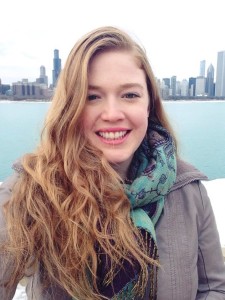 For as long as we’ve had the Internet, we’ve had online trolls. But what is a troll, really—and how do we tell the difference between trolling and more serious forms of abuse? To build a better and more empathetic web, researchers, designers, and users must work in tandem. In this talk, PhD student Lindsay Blackwell explores the ins and outs of misbehavior online, including efforts to regulate and prevent online harassment.
For as long as we’ve had the Internet, we’ve had online trolls. But what is a troll, really—and how do we tell the difference between trolling and more serious forms of abuse? To build a better and more empathetic web, researchers, designers, and users must work in tandem. In this talk, PhD student Lindsay Blackwell explores the ins and outs of misbehavior online, including efforts to regulate and prevent online harassment.
About Lindsay: Lindsay Blackwell is a PhD student at the University of Michigan School of Information’s Social Media Research Lab. Her research explores misbehavior in online communities, including trolling and online harassment. Prior to graduate school, Lindsay enjoyed a career in social media marketing, where she won several awards for her work with clients like I Love New York. You can follow Lindsay on Twitter (@linguangst) or by visiting www.lindsayblackwell.net.
Find her on Twitter as @linguangst
Brian Worthmann: “Journey to the Center of the Earth”
From the guy who brought you acoustic waves in the air and ocean a few Nerd Nites ago comes another talk about the inner layers of the Earth. 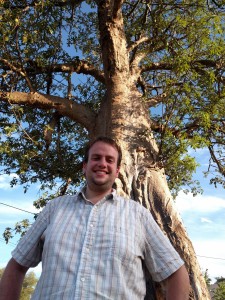 Many of us learned in high school (or earlier!) that the Earth is composed of a crust, mantle, outer core and inner core. But how do we know that? The easy answer is “well, smart scientists said so”. But assuming you consider that an unsatisfactory explanation, Brian will talk about some feats of science and engineering used in the last hundred years or so to explore what lies beneath our feet.
Many of us learned in high school (or earlier!) that the Earth is composed of a crust, mantle, outer core and inner core. But how do we know that? The easy answer is “well, smart scientists said so”. But assuming you consider that an unsatisfactory explanation, Brian will talk about some feats of science and engineering used in the last hundred years or so to explore what lies beneath our feet.
About Brian: A graduate student at the University of Michigan in the Applied Physics Department, Brian spends his not-free time researching acoustics and talking about science with whoever wants to listen. And he spends his free time nerding out pretty hard about physics, math and engineering, and binge-watching House of Cards Season 4. Brian is a 2015 RELATE alum, and also one of the newest members of the RELATE coordinator team.
Film Photography, Interactive Video, & the Magic of Microphones
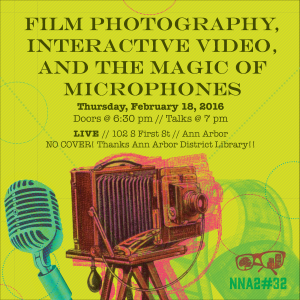
It’s Media Mania Month at Nerd Nite Ann Arbor! We’re focusing in on the life after “the death of film” by exploring the process behind and the art created with non-digital photography with historic camera expert Ross Orr. We’ll hear from Martin Thoburn, an interactive filmmaker who finds endless ways to expand his video-based art beyond the screen. Andy Ross might know more about microphones than any person to ever speak into ours – and he’ll be telling the story of the impact of mic amplification on modern music. Join us for a deep dive into audiovisual awareness, plus drinks, laughs, and a spin on a vintage 35MM Carousel projector.
Agricultural Origins, Accurate Amounts, & Anxiety
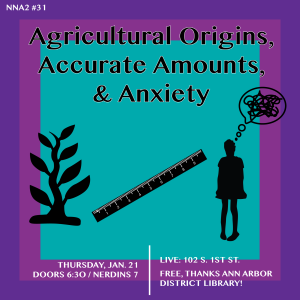 This month, Nerd Nite A2 turns FOUR! Yay, NNA2! Please join us to celebrate our anniversary and to get nerd-schooled on three fascinating topics that we likely encounter on a daily basis. If you’ve eaten food before, you’ll be interested to hear Joseph Tychonievich explain the origin stories behind fruits and veggies that we take totally for granted. Heather Wade is going to weigh the pros and cons of measurement history and it’s going to be the most accurate weighing any of you have ever experienced. Finally, Elizabeth Block is here to calmly explain how anxiety occurs and reassure you that your anxiety levels are normal – or are they???? So come on out for drinks, laughs, and some A+ nerd time.
This month, Nerd Nite A2 turns FOUR! Yay, NNA2! Please join us to celebrate our anniversary and to get nerd-schooled on three fascinating topics that we likely encounter on a daily basis. If you’ve eaten food before, you’ll be interested to hear Joseph Tychonievich explain the origin stories behind fruits and veggies that we take totally for granted. Heather Wade is going to weigh the pros and cons of measurement history and it’s going to be the most accurate weighing any of you have ever experienced. Finally, Elizabeth Block is here to calmly explain how anxiety occurs and reassure you that your anxiety levels are normal – or are they???? So come on out for drinks, laughs, and some A+ nerd time.
About Joseph: A life long gardener and lover of plants, Joseph has been a repeated guest on public radio’s food show The Splendid Table, wrote a book, Plant Breeding for the Home Gardener (Timber Press, 2013), spent two years working at the famed rare plants nursery Arrowhead Alpines and was named by Organic Gardening Magazine as one of “…six young horticulturists who are helping to shape how America gardens.” Joseph lives and gardens with his husband and an adorable black cat in Ypsilanti. You can find him on Twitter at @gsgardens, read his blog posts at gardenprofessors.com or https://www.facebook.com/TheGardenProfessors/.
 & groceries, turn on a light switch, pay our bills, use gas/electricity, watch TV, build anything, pay for anything. How do we know these measurements are correct? What happens when these measurements happen in another country? How do we know the measurements “translate” from country to country & language to language? International System of Units and metrological traceability are the backbone of measurements. What does that mean? What are examples of non-traceable measurements? What happens when measurements go wrong? Proper measurements bring confidence & peace-of-mind to our lives. Understanding what measurements are help to ensure better measurements happen and life goes more smoothly.
& groceries, turn on a light switch, pay our bills, use gas/electricity, watch TV, build anything, pay for anything. How do we know these measurements are correct? What happens when these measurements happen in another country? How do we know the measurements “translate” from country to country & language to language? International System of Units and metrological traceability are the backbone of measurements. What does that mean? What are examples of non-traceable measurements? What happens when measurements go wrong? Proper measurements bring confidence & peace-of-mind to our lives. Understanding what measurements are help to ensure better measurements happen and life goes more smoothly.About Heather: UM grad and Calibration Officer at NSF International, headquartered here in Ann Arbor, Heather is an ASQ-Certified Calibration Technician (www.asq.org). She is a co-author of The Metrology Handbook, 2nd Edition, edited by Jay Bucher and has been published in Cal Lab Magazine: The International Journal of Metrology. She just completed her terms as Chair of ASQ’s Measurement Quality Division and also as Chair of ASQ’s Certification Board subcommittee for the ASQ-CCT. She has presented and published at national and international conferences. She also does outreach as a Metrology Ambassador. She has worked as a microbiologist, extraction and analytical chemist, and as a physical test engineer prior to embarking on her career in metrology and calibration.
See you on 1/21/2016!
Smart Devices, Presidential Sweets, and Civic Twitterbots

Nerd Nite A2 is all about approaching things from new perspectives this month. Sure our phones are smart now, but let’s consider the value of making other electronic devices intelligent enough to sense and transmit useful information – such as getting a heads up from your fridge before you’ve poured recently-spoiled milk over your cereal. We’ll review the sweeter side of presidential history with a project that re-interprets U.S. presidents as cupcakes, a lens through which even the worst policy decisions can become into melt-in-your-mouth magic. And finally, we’ll think about using social media to encourage voters to get to the polls, instead of as a method of sharing cat videos – and with the November election just behind us, we’ll even get to hear about how well it works! So come hungry for nanotechnology, Commander in Chief-flavored cupcakes, and civic-minded social media and join us for another nerdy good time.
When: Thursday, November 19, 2015, doors at 6:30pm, talks at 7pm!
Where: LIVE, 102 S First St, Ann Arbor
$$$: NO COVER! Courtesy of your pal, the Ann Arbor District Library!!
Back to the Future Night: Design, Robots and What BTTF Got Right (and Wrong)
This month’s event takes us Back to the Future, because when BTTF 2 came out in 1989, October 21, 2015 seemed pretty darn future. Since we’re living in the future, we’ll talk about what the future looks like, or more accurately, what designers thought it would look like. We’ll find out the science behind instructing our (eventual) personalized robot servants to make our martinis just right. And finally, we’ll get hardcore about the Back to the Future trilogy, checking out how accurate their vision of the future really was. So power up your flux capacitors and get here for a flashback to the future!
When: Wednesday, October 21, 2015, doors at 6:30pm, talks at 7pm!
Where: LIVE, 102 S First St, Ann Arbor
$$$: NO COVER! Hey, thanks, Ann Arbor District Library!!
Nick Tobier – Where’s My Hoverboard?
Ready to assume vivid astro focus? We’ll follow the evolution of space-age design from the euphoria and optimism of the 1950s to the more cynical ‘70s, and see how artists’ conceptions of the future have influenced history and in turn, our society.
About Nick: Nick is an Associate Professor at the Stamps School of Art and Design and the Center for Entrepreneurship in the College of Engineering at the University of Michigan. With a background in sculpture and landscape architecture, Nick has long been interested in the social lives of public places and his work has been seen at the everywhere from the Edinburgh Fringe Festival to Detroit’s Brightmoor neighborhood.
Zhen Zeng – Everyone Can Teach a Robot
Ever felt too busy to do the laundry or too tired to cook? What if a robot could help you with all of this someday in the future? Developments in robotics are bringing this dream closer to reality by making robots that can imitate people and learn new actions. One day, you may be teaching your own robot how to make your favorite cocktail!
About Zhen: Zhen is a PHD student at the University of Michigan in Electrical Engineering, with a focus on robot object manipulation. When she’s not teaching Baxter the Robot to see, move, and think, she enjoys volleyball and card games.
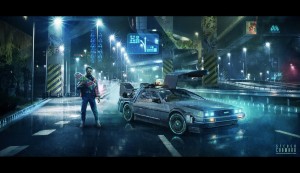 Eli Neiburger – Back to the Future of Back to the Future
Eli Neiburger – Back to the Future of Back to the Future
It’s the Future today! October 21, 2015 is the day Marty McFly visits in Back to the Future 2. Let’s take a detailed look at what they thought today would be like 30 years ago, and see what they missed, and what they nailed. READ MY FAX!
About Eli: Eli is Deputy Director at the Ann Arbor District Library and has given lots of talks across the US, Europe, Australia and New Zealand, but this is his very first talk that’s not about libraries! You may have seen him leading the Nintendoland Family Band at the Water Hill Music Festival. You can follow him on Twitter at @ulotrichous.
Sound, Symbiosis, & Active Art
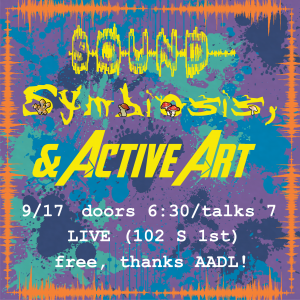
This month our topics go from down in the dirt (plant and fungi symbiosis!) to long-distance sounds to local examples of art in action. What our three featured nerds have in common, however, is that they each have a passion for their topic and want you to understand it too! So, whether you consider yourself an art aficionado, a sound geek, a plant-lover or beyond, we’ve got plenty of new stuff for you to pick up while you’re tipping back a beer. Grab a drink, grab a friend, and we’ll see you at LIVE on September 17th!
When: September 17, 2015, doors at 6:30 pm, talks at 7 pm!
Where: LIVE, 102 S. First St. in Ann Arbor
$$$: No cover! Big thanks to the Ann Arbor District Library!
Brian Worthmann — The Sound Heard ‘Round the World’
Alex Taylor — Underground Alliances
Nearly all plants form intimate symbiotic partnerships with fungi called Mychorrhizae. These fungi grow in elaborate webs through the soil, and then into the plan roots, growing even inside the plant cells, where the plant and fungus have struck a fabulously successful deal. The terms of this deal are straightforward: a trade of sugar for mineral nutrients that plays to the strengths and weaknesses of each partner. Mycorrhizae helped early plants get a toehold on land, and to this day, the vast majority of plants across the globe thrive thanks to their fungal partners. The world would be a barren place without this ancient and strange symbiosis.
About Alex: Alex is a Ph.D student in Ecology and Evolutionary Biology, studying how plants evolved the ability to recognize and partner with bacteria and fungi in the soil. Most days, this involves sitting at a computer and running algorithms on the genome sequences of different plants. He also loves talking and writing about the spine-tingling majesty of science, and co-founded the blog “Thought and Awe” to do just that. In his spare time, Alex is into camping, gardening, and talking about the big stuff over a beer. Find him on Twitter at @ATayters.
Brenda Oelbaum – Stitch and Bitch: Hopefully a Comedy
Fe and LSD
 What’s all the “Fe”ss about? We’re not the only organisms that need Iron, which can mean we have some competition in getting the nutrients we need. Ada Hagan breaks down the ins and outs of Iron and bacteria. Even the most well-nourished body and brain can still learn a LOT about consciousness and psychoactive substances. Research on psychedelics is only just now recovering fromits implosion in the 70s, following the heydey of LSD research in the 60s. What does our current understanding of the brain tell us about the psychadelic experience? Dr. George A. Mashour walks us through a little research history and leads us through his present exploration of ketamine.
What’s all the “Fe”ss about? We’re not the only organisms that need Iron, which can mean we have some competition in getting the nutrients we need. Ada Hagan breaks down the ins and outs of Iron and bacteria. Even the most well-nourished body and brain can still learn a LOT about consciousness and psychoactive substances. Research on psychedelics is only just now recovering fromits implosion in the 70s, following the heydey of LSD research in the 60s. What does our current understanding of the brain tell us about the psychadelic experience? Dr. George A. Mashour walks us through a little research history and leads us through his present exploration of ketamine.
$$$: NO COVER because Ann Arbor District Library!
The Battle for Iron: What’s all the “Fe”ss about? – Ada Hagan
 underwent an explosion in the 1960s followed by an implosion in the 1970s. More recently, the neuroscience of psychedelic drugs has emerged from the shadows of a dark past. What are the neural correlates of the psychedelic experience? What does this phenomenology and neurobiology tell us about the functioning of the brain? I will discuss these questions as well as my own research on ketamine.
underwent an explosion in the 1960s followed by an implosion in the 1970s. More recently, the neuroscience of psychedelic drugs has emerged from the shadows of a dark past. What are the neural correlates of the psychedelic experience? What does this phenomenology and neurobiology tell us about the functioning of the brain? I will discuss these questions as well as my own research on ketamine.

